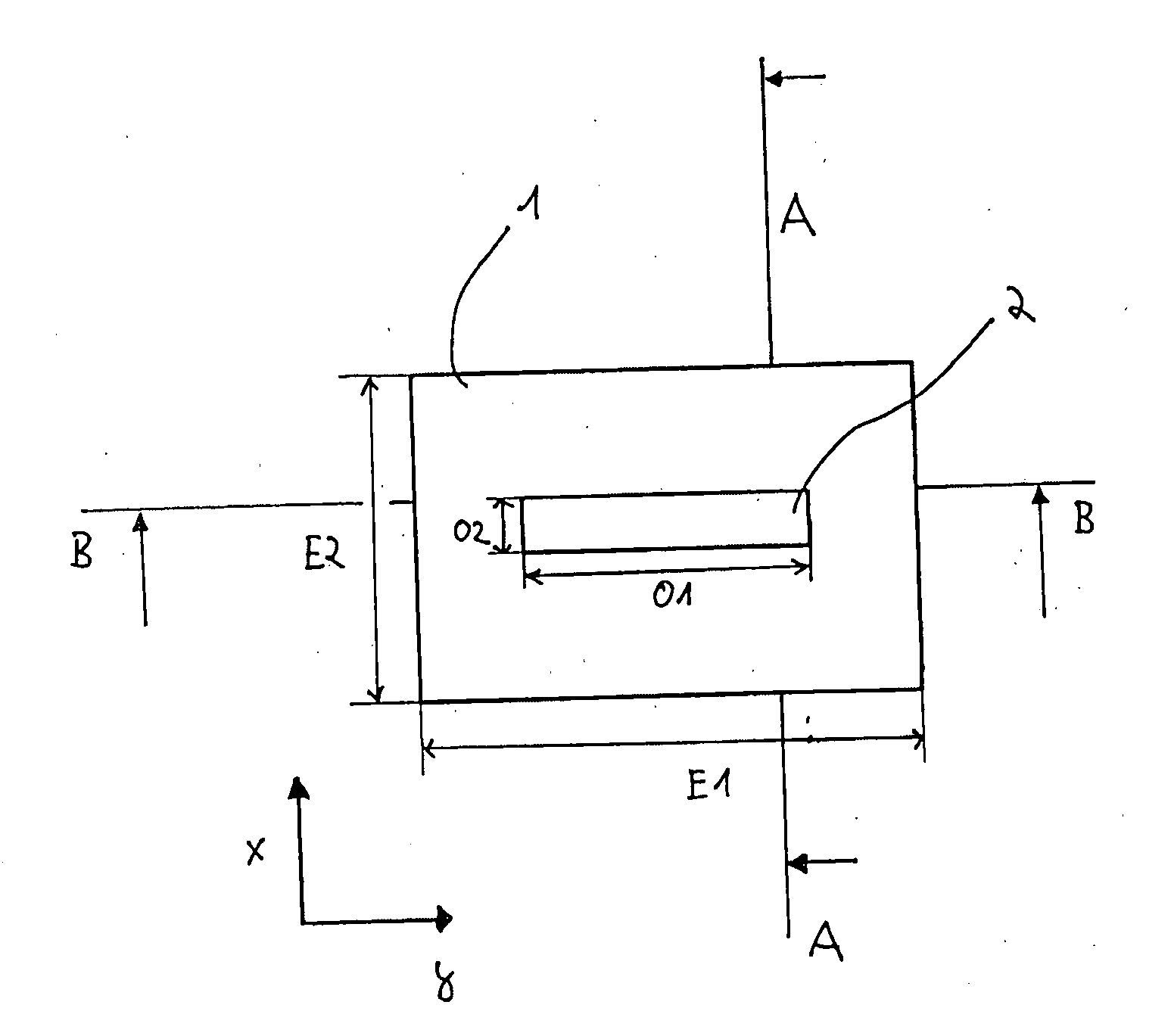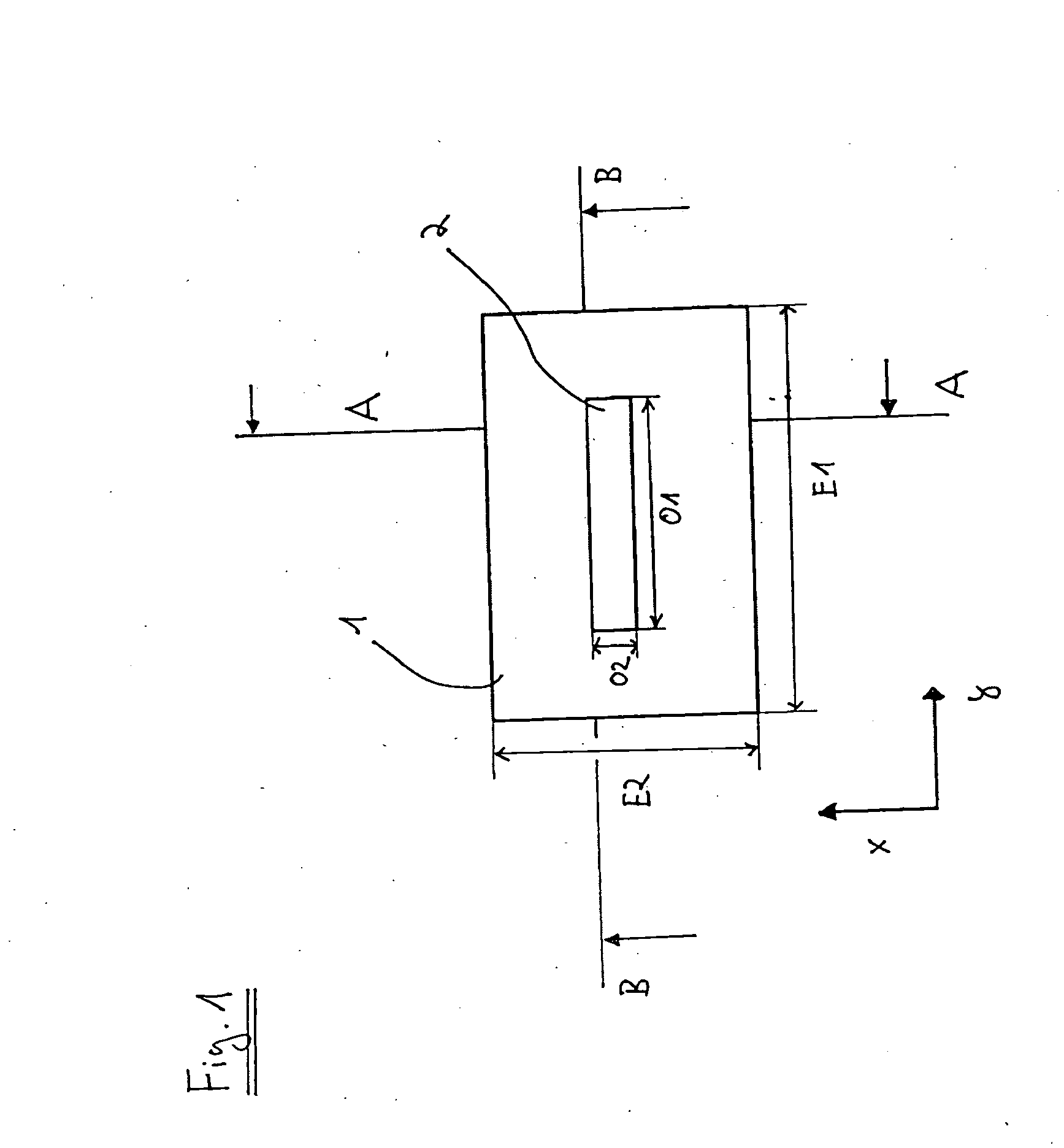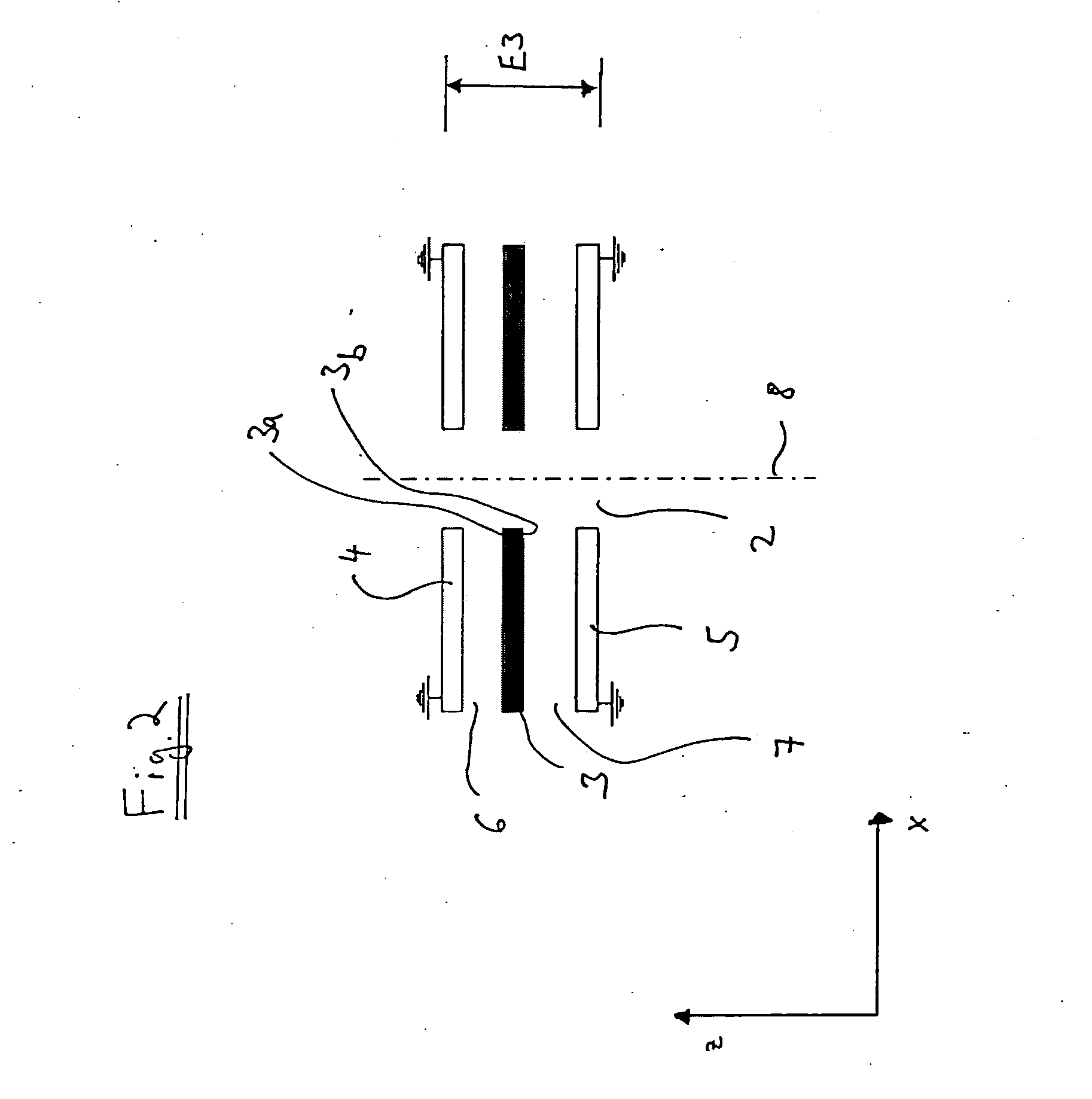Phase-shifting element and particle beam device having a phase-shifting element
a technology of phase-shifting elements and particle beams, which is applied in the field of phase-shifting elements and particle beam devices having phase-shifting elements, can solve the problems of long time-consuming and laborious, carbon film is rapidly contaminated, and small holes are easily blocked, and achieves the effect of convenient manufactur
- Summary
- Abstract
- Description
- Claims
- Application Information
AI Technical Summary
Benefits of technology
Problems solved by technology
Method used
Image
Examples
Embodiment Construction
[0065]The system described herein is based on the recognition that a desired phase shift is achievable using simple geometric designs with the help of a non-homogeneous and / or anisotropic potential, in particular a non-homogeneous electric potential. FIG. 1 shows a top view of a first exemplary embodiment of a phase-shifting element 1 in the form of a phase plate in which a non-homogeneous potential or an anisotropic potential is generated. Phase-shifting element 1 is situated in the beam path of a particle beam device (for example, an electron beam device in the form of a TEM) in such a way that the optical axis of the particle beam device runs in the z direction, which is perpendicular to the plane of the page on which FIG. 1 is printed.
[0066]Phase-shifting element 1 has a first dimension E1 in the y direction and a second dimension E2 in the x direction. In principle, the phase plate has a rectangular design in this exemplary embodiment. It should be expressly pointed out that th...
PUM
 Login to View More
Login to View More Abstract
Description
Claims
Application Information
 Login to View More
Login to View More - R&D
- Intellectual Property
- Life Sciences
- Materials
- Tech Scout
- Unparalleled Data Quality
- Higher Quality Content
- 60% Fewer Hallucinations
Browse by: Latest US Patents, China's latest patents, Technical Efficacy Thesaurus, Application Domain, Technology Topic, Popular Technical Reports.
© 2025 PatSnap. All rights reserved.Legal|Privacy policy|Modern Slavery Act Transparency Statement|Sitemap|About US| Contact US: help@patsnap.com



